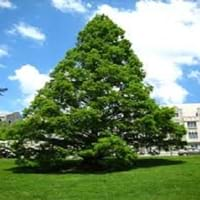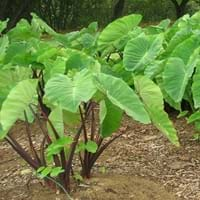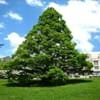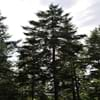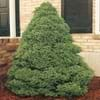Life Span
Perennial
Annual
Type
Needled or Scaled Evergreen
Tender Perennial
Origin
China
Southeastern Asia
Types
Not available
Eddoe taro, Dasheen taro
Number of Varieties
Not Available
Habitat
Deciduous forests, Mixed deciduous forest
agricultural areas, Hillside, Warm and moist climatic conditions
USDA Hardiness Zone
5-9
10-11
Sunset Zone
A3, 3a, 3b, 4, 5, 6, 7, 8, 9, 10, 14, 15, 16, 17, 18, 19, 20, 21, 22, 23, 24
H1, H2, 22, 23, 24
Habit
Pyramidal
Clump-Forming
Flower Color
Green, Light Green
White, Green
Flower Color Modifier
Bicolor
Not Available
Leaf Color in Spring
Light Green
Dark Green, Ivory
Leaf Color in Summer
Green, Light Green
Dark Green, Ivory
Leaf Color in Fall
Orange, Bronze
Dark Green, Ivory
Leaf Color in Winter
Not Available
Dark Green, Ivory
Leaf Shape
Alternate
V-Shaped
Plant Season
Spring, Summer, Fall, Winter
Spring, Summer, Fall, Winter
Sunlight
Full Sun
Partial shade, Full Shade
Type of Soil
Clay, Loam
Loam, Sand
The pH of Soil
Acidic, Neutral
Acidic, Neutral
Soil Drainage
Average
Well drained
Bloom Time
Indeterminate
Indeterminate
Tolerances
Drought
Heat Tolerance, Humidity, Salt and Soil Compaction, Shallow soil
Where to Plant?
Ground
Container
How to Plant?
Seedlings
From Rhizomes
Plant Maintenance
Medium
Medium
Watering Requirements
Needs small amount of water
Needs 2-3 times watering per week, Needs a lot of water initially
In Summer
Lots of watering
Lots of watering
In Spring
Moderate
Moderate
In Winter
Average Water
Average Water
Soil pH
Acidic, Neutral
Acidic, Neutral
Soil Type
Clay, Loam
Loam, Sand
Soil Drainage Capacity
Average
Well drained
Sun Exposure
Full Sun
Partial shade, Full Shade
Pruning
Prune if you want to improve plant shape, Remove damaged leaves, Remove dead branches, Remove dead leaves
No pruning needed
Fertilizers
All-Purpose Liquid Fertilizer, Compost
All-Purpose Liquid Fertilizer, Less fertilizing
Pests and Diseases
Dry root rot, Free of serious pests and diseases, fungus
Aphids, Rats, Snails
Plant Tolerance
Deer resistant, Drought
Heat Tolerance, Salt and Soil Compaction, Shade areas
Flowers
Insignificant
Insignificant
Flower Petal Number
Single
Not Available
Foliage Texture
Fine
Bold
Foliage Sheen
Glossy
Glossy
Attracts
Birds, Squirrels
Aphids, Bugs, Not Available, Snails
Allergy
Pollen
Swelling in mouth, Throat itching
Aesthetic Uses
along a porch, deck or patio, Beautification, Landscape Designing, Showy Purposes, Wild gardens
Showy Purposes
Beauty Benefits
Not Available
Poison Ivy, Skin cleanser, Weightloss
Environmental Uses
Air purification
No fertilizer, pesticides, or herbicides needed, Prevent weeds
Medicinal Uses
Unknown
Aging, Laxative, Weight loss
Part of Plant Used
Not Available
Leaf Stalks, Leaves
Other Uses
deer resistant, Shelterbelt, Showy Purposes
Used As Food, Used as Ornamental plant
Used As Indoor Plant
No
No
Used As Outdoor Plant
Yes
Yes
Garden Design
Feature Plant, Shade Trees, Street Trees
Container, Feature Plant, Groundcover, Houseplant, Mixed Border, Tropical
Botanical Name
METASEQUOIA glyptostroboides
ALOCASIA micholitziana
Common Name
dawn redwood
Elephant Ear, Taro
In Hindi
dawn redwood
अरवी
In German
Urweltmammutbaum
Colocasia (Pflanzengattung)
In French
aube séquoia
Colocasia
In Spanish
metasecuoya
Colocasia
In Greek
dawn redwood
Colocasia
In Portuguese
amanhecer Redwood
Colocasia
In Polish
świt sekwoja
Kolokazja
In Latin
dawn redwood
Colocasia
Phylum
Pinophyta
Magnoliophyta
Class
Pinopsida
Liliopsida
Family
Cupressaceae
Araceae
Genus
Metasequoia
Alocasia
Clade
Not Available
Angiosperms, Monocots
Tribe
Not Available
Colocasiodeae
Subfamily
Sequoioideae
Aroideae
Number of Species
Not Available
Season and Care of Dawn Redwood and Taro
Season and care of Dawn Redwood and Taro is important to know. While considering everything about Dawn Redwood and Taro Care, growing season is an essential factor. Dawn Redwood season is Spring, Summer, Fall and Winter and Taro season is Spring, Summer, Fall and Winter. The type of soil for Dawn Redwood is Clay, Loam and for Taro is Loam, Sand while the PH of soil for Dawn Redwood is Acidic, Neutral and for Taro is Acidic, Neutral.
Dawn Redwood and Taro Physical Information
Dawn Redwood and Taro physical information is very important for comparison. Dawn Redwood height is 2,130.00 cm and width 610.00 cm whereas Taro height is 30.00 cm and width 30.00 cm. The color specification of Dawn Redwood and Taro are as follows:
Dawn Redwood flower color: Green, Light Green
Dawn Redwood leaf color: Light Green
Taro flower color: White and Green
- Taro leaf color: Dark Green and Ivory
Care of Dawn Redwood and Taro
Care of Dawn Redwood and Taro include pruning, fertilizers, watering etc. Dawn Redwood pruning is done Prune if you want to improve plant shape, Remove damaged leaves, Remove dead branches and Remove dead leaves and Taro pruning is done No pruning needed. In summer Dawn Redwood needs Lots of watering and in winter, it needs Average Water. Whereas, in summer Taro needs Lots of watering and in winter, it needs Average Water.
